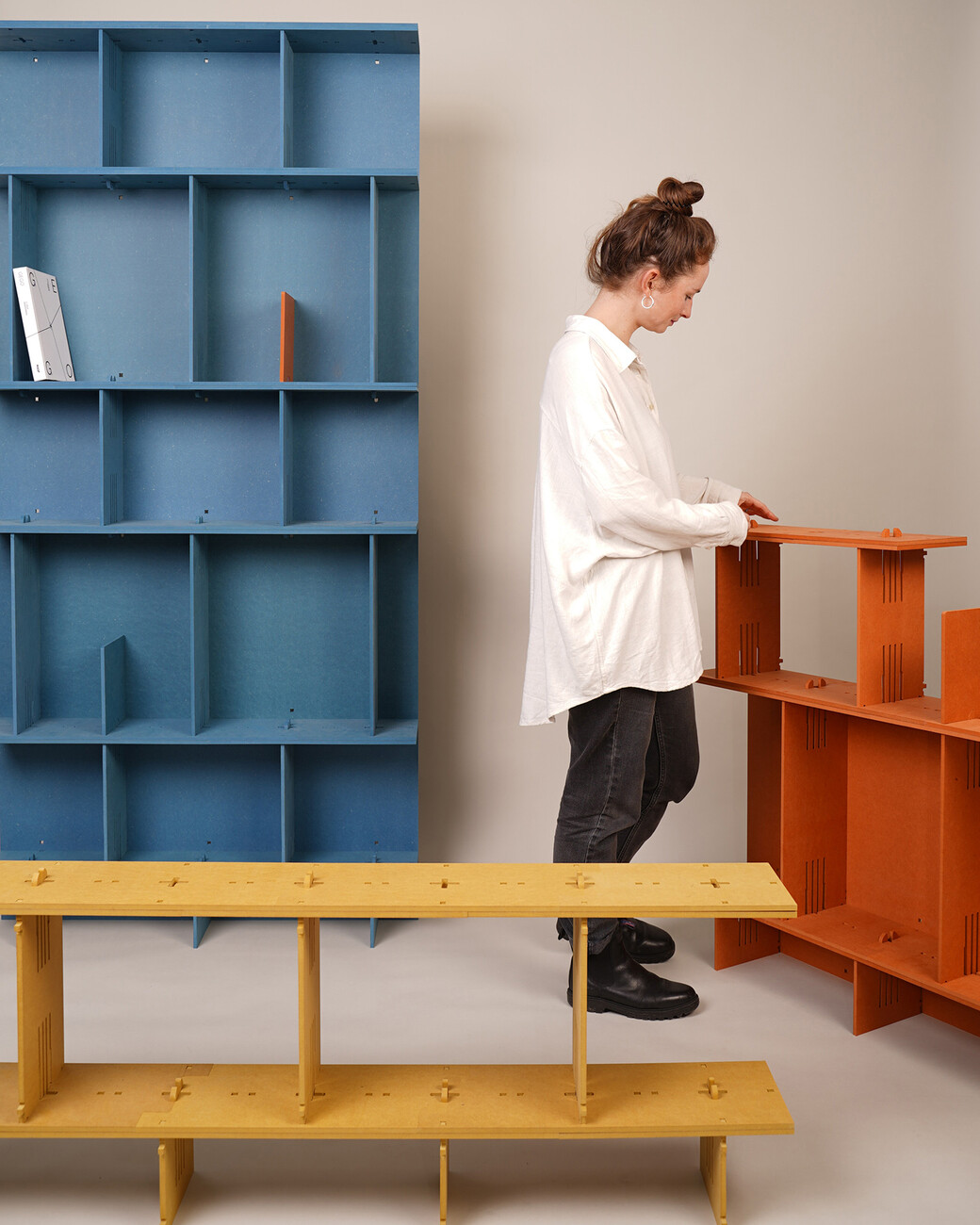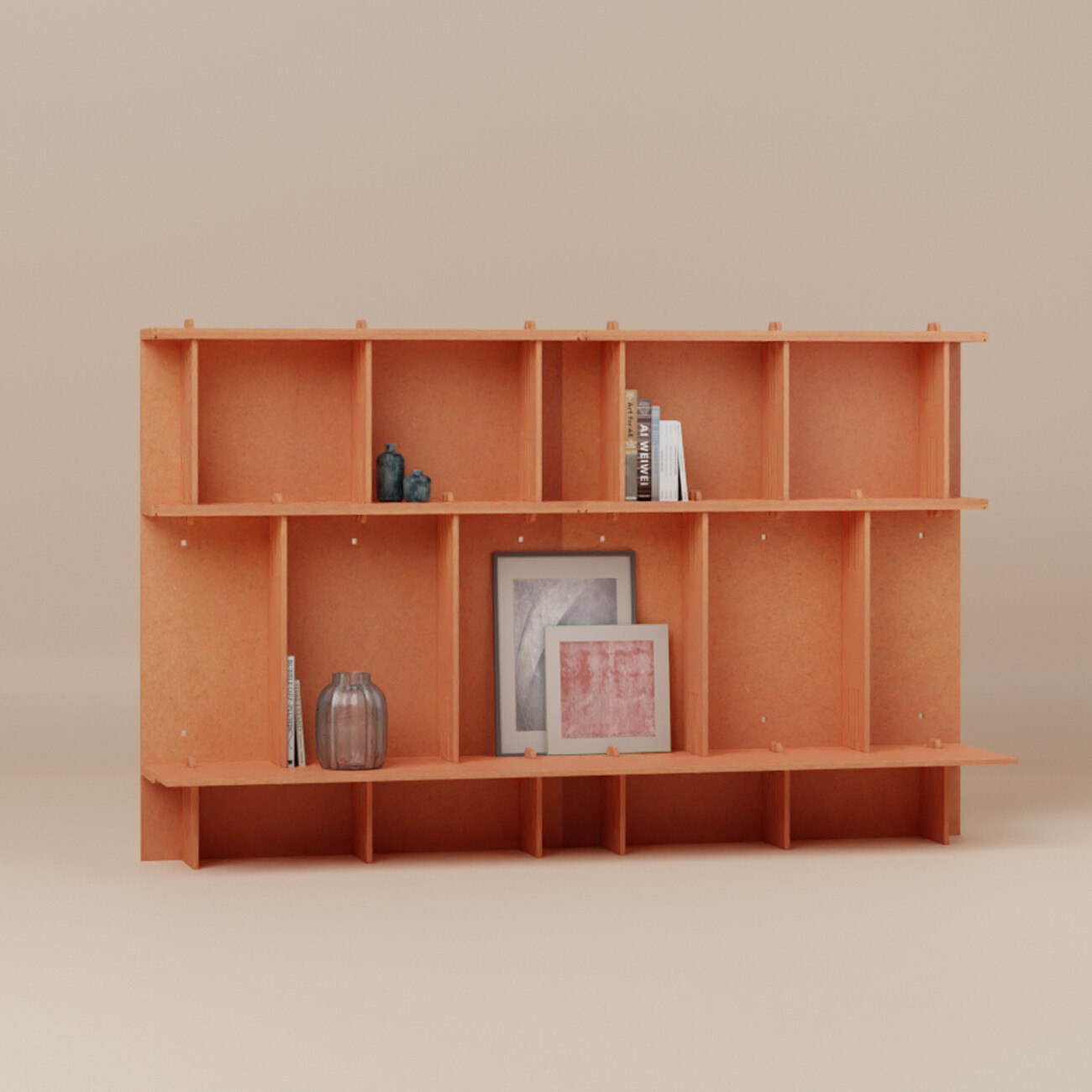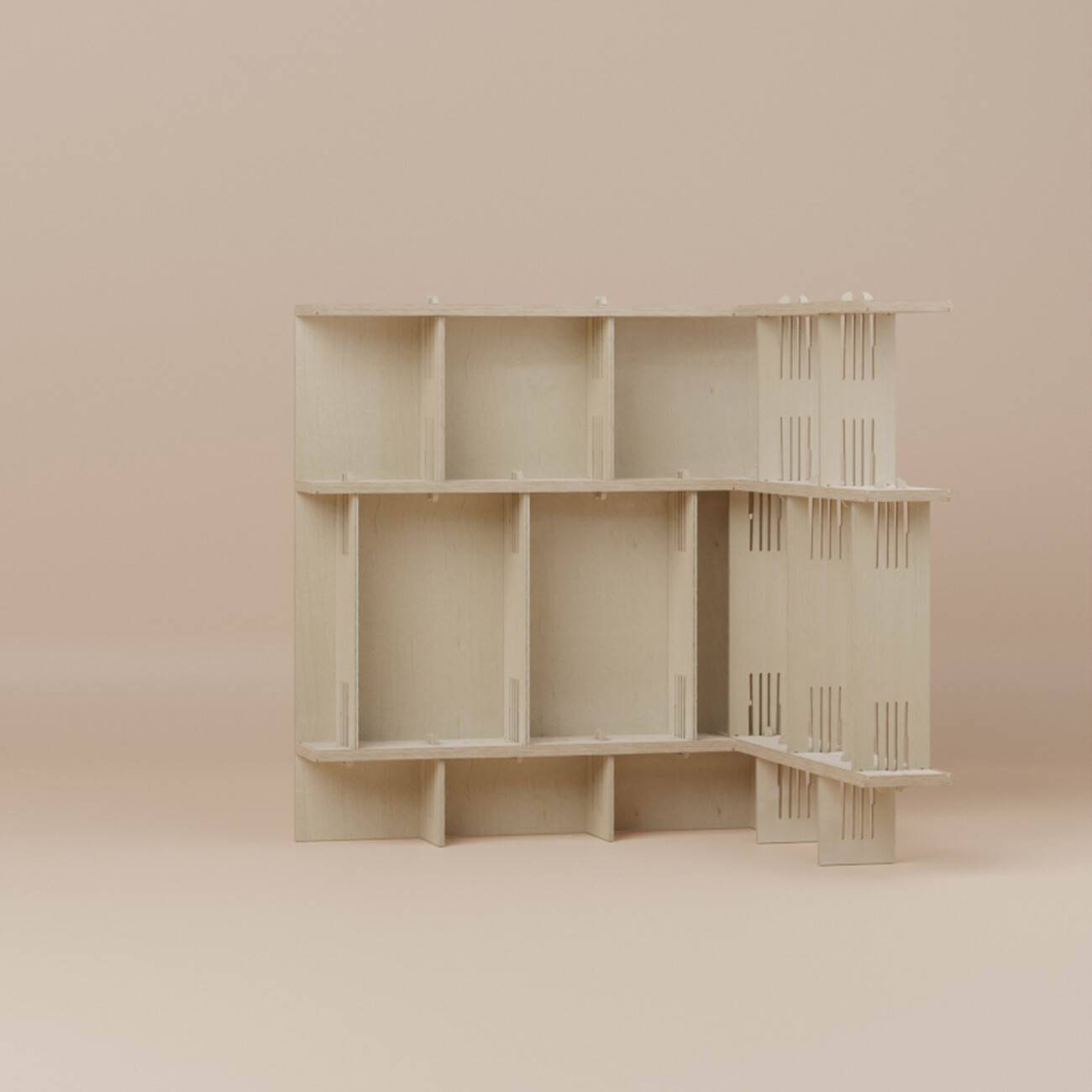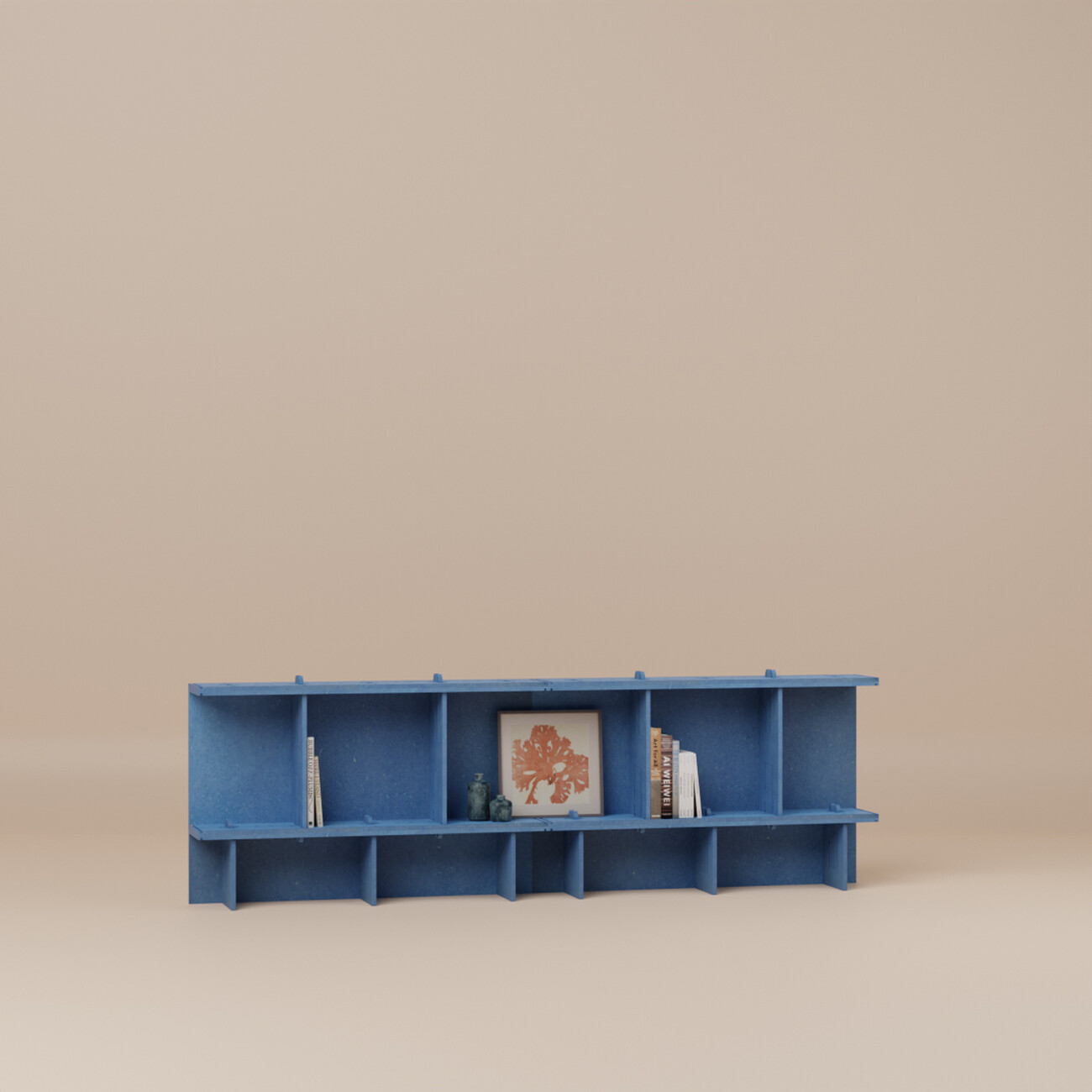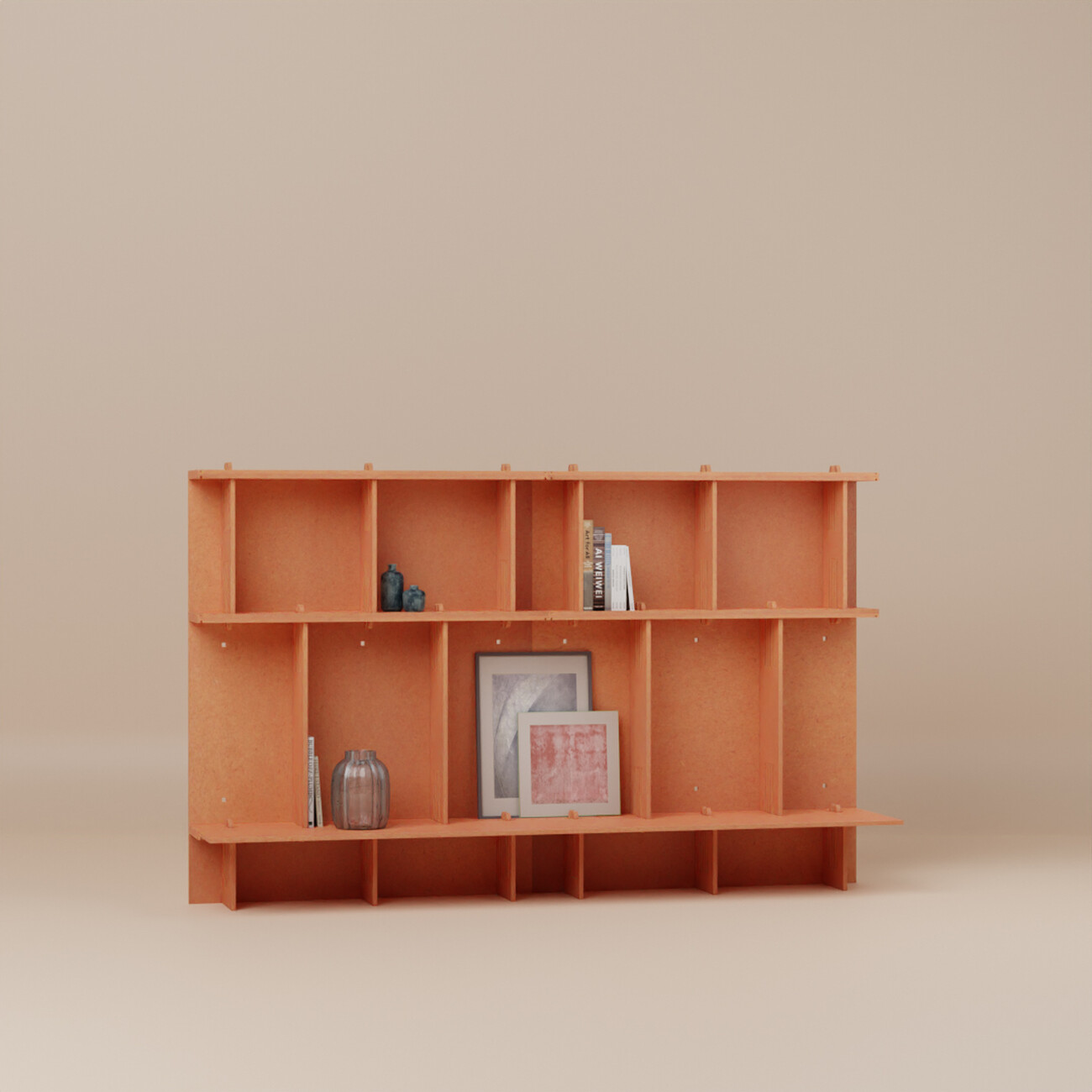SUSTAINABILITY
Clever clips
Anna Moldenhauer: The idea for a modular construction system came about as a university teaching project at OWL University of Applied Sciences and Arts – given the large influx of refugees, temporary accommodation was needed at short notice for a large number of people. At the time you were studying for a Master’s degree in Integrated Design (MID). How has the concept developed since then?
Thomaz da Silva Lopes Vieira: After we presented the project in the university setting, we got a lot of requests to develop the idea further as a start-up. So, with that in mind I acquired the necessary know-how and the project took off. Then I was joined by Mona Makebrandt who is an interior architect. Together we set up ClipHut and started to design furniture that is adaptable. This meant we were able to quickly create an office for ourselves at home during the pandemic complete with a partition. We used this prototype to develop a flexible, sustainable set of furniture that can be assembled and dismantled at any time and can be adapted to suit its new environment. The system works everywhere regardless of the type of living space concerned and does no damage to either walls or floors.
The system consists entirely of wooden elements that are inserted into each other and fixed with a rubber mallet; there is no need for screws or glue. How do you achieve the necessary stability?
Thomaz da Silva Lopes Vieira: The stability comes from the connection itself – it functions like a clamp joint. The clip also connects the elements of the plug-in system a bit like a clamp. Whether you are building a bed or shelving, they are all composed of the same number of wooden elements, it’s just that the structure differs. That means, if need be, you can convert one piece of furniture into a different one.
The ClipHut system can also be used to build houses – how do you protect the structure from damp and so on?
Thomaz da Silva Lopes Vieira: Essentially you create a wooden house, it’s just that the basic structure is made using our system. In addition, there are the usual insulating layers to prevent moisture from seeping in. We already have access to sustainably produced membranes for this purpose. Next, the basic system which is like a scaffolding can be adapted with regard to the facade, the roof but also the interior fittings.
You involve the owners of each ClipHut in the construction – you might say as a DIY project. Why is that important to you?
Thomaz da Silva Lopes Vieira: Firstly, because we believe that you have a different kind of emotional attachment to a project when you have helped develop it. If you have made the furniture yourself, you appreciate it more. Secondly, ClipHut stands for the idea of collaborative building. When you build a house or a piece of furniture with friends or family you create something together and that strengthens the bond between you.
Was the DIY idea part of the concept from the start?
Thomaz da Silva Lopes Vieira: Yes, that was a condition that I sort of imposed on myself. I wanted to use technology to simplify the process of realizing architecture and furniture. That’s why we also use classic CNC machines in production, not highly complex robots – I wanted it to be possible to realize all the types of connections we use both simply and quickly.
I think that is an important aspect because making something yourself fills you with pride and you are happy to show the project. The furniture set can also be used to make other structures such as trade fair stands, partitions, pavilions – what area do you wish to focus on going forward?
Thomaz da Silva Lopes Vieira: Our current focus is on creating furniture using the ClipHut system and the other structures will follow from there. Naturally, it would be great if in a few years’ time we could see more houses being built with our system. After all, the good thing is that the wooden structure can be used again to realize a different idea. That means less construction waste. Moreover, as parts of the used structure can essentially be sold to someone else, the benefit is more lasting. So, we could contribute to a circular economy in architecture, too. That is definitely a goal to bear in mind.
What kind of wood is used for the furniture set?
Thomaz da Silva Lopes Vieira: We use multi-layer boards, in other words MDF dyed with natural pigments. As a result, the wood does not need to be colored later and can instead be supplied to the customer in the desired color.
Where are you currently producing?
Thomaz da Silva Lopes Vieira: We produce in Germany, locally in Lippe in Central Germany.
You studied Architecture and Urban Planning in Brazil and then came to Germany to continue your studies. Is there an approach in Brazil’s architecture you find inspiring?
Thomaz da Silva Lopes Vieira: Thanks to my studies there I integrated colors into my work from the start. It was also during this time that I became more committed to improving people’s lives through design and architecture. So, for me ClipHut was more than a university project. The fact that we were then able to use the system to provide accommodation for refugees was a huge incentive and gave us a lot of energy for developing the idea. Then there was my interest in technology and the question of how you can use it to build better, inexpensively and with less material. I would say my education in Brazil and Germany alike provided me with inspiration and it was a good combination for ClipHut.

